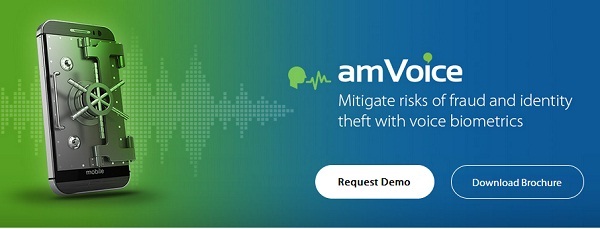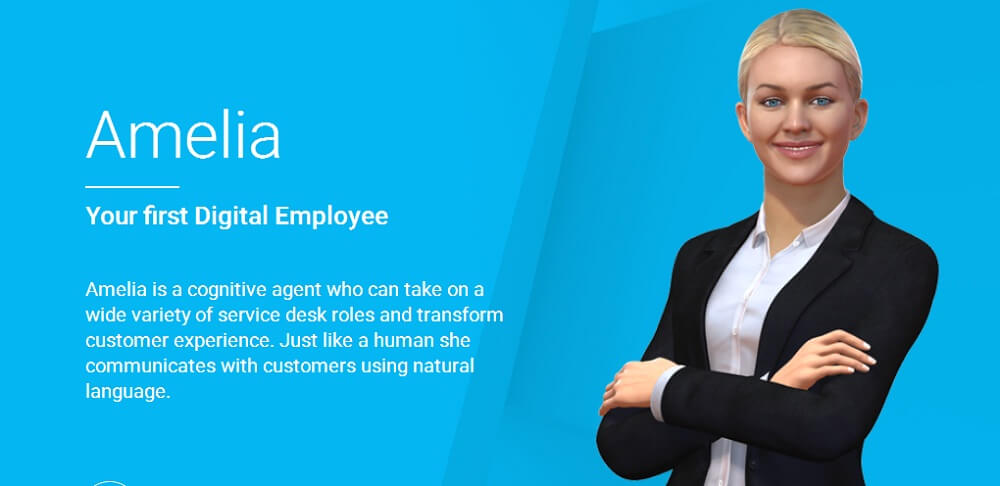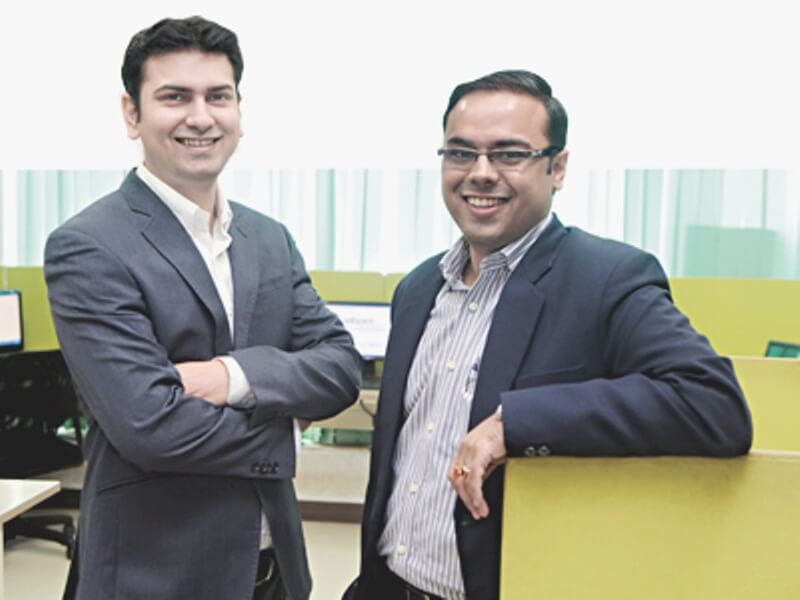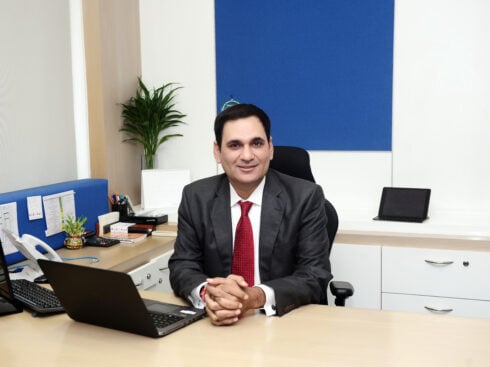A quick Google search reveals that there are 22 major languages in India, written in 13 different scripts, with over 720 dialects!
Let that sink in with another reality – as per general estimates, 70% of India’s population is not living in Tier I cities but in small towns and villages. They face a huge communication gap as they are not able to participate in the digital revolution because of the challenges of literacy, language, and the availability of smartphones. Then how do you reach out to this population which might not be able to SMS nor understand English?
This is the challenge Umesh Sachdev and Ravi Saraogi decided to address with Uniphore – a startup that creates IT in speech recognition and speech biometrics. The duo realised that, for this population, the lowest common denominator of communication is vernacular voice.
“Everyone knows how to talk in the local language. So, we thought if we can make computers and phones talk in all local languages, then a mass of people can start using these digital devices to connect to the Internet and do a variety of things like banking, healthcare, and ecommerce,” says Umesh.
And that was the vision behind starting Uniphore. After moving to Chennai in 2007, for one year, the duo just watched and studied how people, especially in rural areas, used their mobile phones. They realised that SMS-based access was limited and the main usage was through speech in the regional language. In 2008, the startup was initially incubated at IIT Madras with the idea of using speech analytics software to bridge the digital divide.
But the duo soon realised that voice will play a pivotal role in any customer service activity. Additionally, if machines could be taught to understand, process, and respond to human speech, they could help bridge the digital divide. From then onwards, starting from a grant of $100K from National Research Development Corporation in 2008, Uniphore has raised more than $15 Mn in funding as it builds products to utilise the power of speech to revolutionise and transform human and machine interactions.
The company’s solutions enable humans to use speech to engage and instruct machines while empowering machines or software applications to understand and respond back. Over the course of time, Uniphore has well-expanded beyond Indian dialects and added even global languages such as US English, Spanish, French, Arabic, Thai (70 in all) to its fold.
Speech Analytics, Virtual Assistant, Voice Biometrics
Since inception, Uniphore has been a B2B2C play and was never a direct-to-consumer product. Says Umesh, “The proposition was that our software will create one more avenue for enterprises to communicate with the consumer.”
The startup does this through its products. The first one is auMina – which is a speech analytics product. This product is basically for call centres. Every time a customer calls a centre, he is informed that the call will be recorded for quality and training purposes. But because there are millions of such recordings, no one can actually listen to these recordings. That’s when auMina comes into play. It has the ability to virtually listen to all of these calls. It converts speech to text, detects emotions, voice modulation, and the analytics aim to predict the customer’s reaction at the end of the call.
This is achieved through its sophisticated language model which detects keyphrases along with multiple variants, accents, and pronunciations in the calls. In combination with pitch/voice modulation and positive or negative spoken keyphrases in the calls, auMina captures the emotion of the customer which is categorised as happy, angry, frustrated, or irate. The emotions of the customer, agent’s interaction on the call and call metadata with varied weightages can be configured and aggregated to form a comprehensive score to measure business outcomes.

“So you get a fair sense of how did you serve the customer, was it satisfactory or not, and is the customer likely to come back for business with you or not,” reveals Umesh. In some cases, the software also automates the process, reducing cost for a business. Or, in cases where a new business cannot afford a call centre, it will allow the business to have a natural language or a local language to talk to consumers.
The second product is the virtual assistant akeira – much like Apple’s Siri or Amazon’s Alexa. It allows for consumers to talk to a device in their local language and get things done. It is AI- and deep recognition-enabled and can speak 80 languages including 17 Indian vernacular languages. It allows consumers to have intelligent conversations with brands/enterprises.

Umesh gives an example of its use, “For instance, an insurance company could use akeira for answering customer queries. Say a consumer has a query that he is retiring in five years, so much is the money he has saved, and is looking for recommendation for the best way to invest. Akeira can find the right answers for him.”
This is done by fetching calls from the call logger which are decoded to a system-compatible format to further run speech-based algorithms on audio calls for processing and report generation.
And the third product is amVoice – a voice biometric software. Just like the fingerprint factor on Aadhar, this is a client’s voice biometric which can be used for authentication as a person’s voice is also a unique feature.

So, for instance, banks do not have to ask the client a secret question but can authenticate him using voice alone.

Consequently, banking and financial services turned out to be its biggest customers, followed by BPOs and call centres.
70 Enterprises, Clocking 300% Growth Every Year
Uniphore plays in the medium- to-large enterprises segment, with average billing per customer ranging in a few thousand dollars, per month. Hence, it has not yet focussed on SMBs. Large banks, airlines, telecom companies, hospitals are the ones who use Uniphore. Prominent among these are American Express, Axis Bank, SBI, Airbus, and ITC. Globally, it services close to 70 enterprise, active customers. It now has a presence in eight countries and four geographies, which include India, Southeast Asia (Singapore, Malaysia, Indonesia, and Philippines), Middle East (UAE, Saudi Arabia), and North America.
The bulk of its clients are in India and Asia, with US being a very recent territory. Over the next couple of years, it expects the US to be a major market. Currently, ARRs range between $5 Mn to $10 Mn, with growth rates in the range of the 300%-400% Y-o-Y (year-on-year). Umesh attributes this growth to a pivot that Uniphore made in 2015 to become a complete SaaS model after raising its Series A undisclosed funding from Infosys co-founder Kris Gopalakrishnan, existing investors IDG Ventures India, Indian Angel Network (IAN), YourNest Fund, and Stata Venture Partners.
The Switch To SaaS
Prior to the round, the startup employed a mix of both the license model and SaaS. But, there were several market-driven and internal reasons which drove it to adopt a full-fledged SaaS model.
Reveals Umesh, “Customers want to try before they actually buy it or before they scale their business. To tell a customer you have to pay half a million dollars even before they try it, wasn’t making sense. Secondly, for our business model, a SaaS model allows us to be in constant touch with the customer on a monthly basis. And gives us the opportunity to see how they use it and how we can increase our business.”
Added to that is the fact that in the speech industry, globally as well as in India, not many competitors offer a SaaS model. Uniphore claims that it was the first and continues to be the only company right now which dabbles in the aforementioned three products while offering a SaaS model.
While there are competitors like Hexolabs Interactive Technologies and others in speech analytics, Umesh feels that Uniphore’s biggest differentiating factor is the fact that there is no one company which sells all the three softwares even though each product individually does have some competition. For instance, auMina competes with Call Miner and Nexidia, the virtual assistant akeira competes with Eva and Amelia, while the voice biometrics product amVoice competes with NICE Systems and VoiceVault.
Another factor is Uniphore’s ability to process a number of languages. Coupled with a SaaS model, deep use of AI for automating many a services, a short time to market, lower cost of cost of ownership is what he thinks make for a unique proposition.
It is these strengths the startup will capitalise on, as it forays deeper into the US market. Hence, like last year, it is looking to clock yet another 300%-400% growth in the coming year, as well. In the pipeline are also some exciting iterations for the akeira product.
The Maturing Indian SaaS Market
While Uniphore is spreading its wings in the US, at the same time, the company believes that the Indian market is yet to fully mature.

Says Umesh, “When we talk of subscription or cloud SaaS, large enterprises, especially the ones we work with such as banks, are beginning to consider some of these options. By and large, folks working in enterprises traditionally have been used to vendors and now they have starting adapting SaaS models. So, clearly the shift is across all sectors. But there is still some time before the market fully matures for SaaS.”
However, he adds that what has changed suddenly in the last seven-eight years is that the buzz around SaaS has increased. This is partly due to the number of startups who have sprung up and offer a variety of products on the SaaS model. Support from industry body iSPIRT has also contributed to the change. And since global best practices are now showing that SaaS models are far more successful around the world than traditional enterprise models, the awareness around SaaS has increased. So, gradually that’s also helping in changing how enterprises buy.
Of course selling SaaS from India has its own set of pros and cons.
From $1 Mn To $5 Mn To $10 Mn ARR
Umesh opines that one good thing about doing enterprise testing from India is that the product can get tested at a very high scale. For instance, a bank in India would have millions of customers to be able to test out your product at that scale and then go out to other markets.
On the flip side however, selling in other geographies has its own cultural nuances. “ You have to adapt from country to country – in some countries you can sell direct but in some the only way to do business is through channel partners. These things have to be learnt,” he adds.
For instance his co-founder Ravi had to move to Singapore as the island nation, being an important geography for the startup, required a leadership focus. Ultimately, a startup has to find its way through this maze on its own once it gets to it.
Uniphore has run the gauntlet and proof of that is in reaching the three milestones that are considered important in SaaS business today. These are namely breaching the $1 Mn mark in ARR, then breaching the $5 Mn mark, and then the $10 Mn mark.
Umesh clearly remembers the first milestone. “For us, clearly, breaching the $1 Mn was important. And that happened on the back of the analytics product or the auMina product,” he reveals. Meanwhile, the company hopes that the $10 Mn mark will come on the back of the akeira product for the 100 member-strong team spread between Bengaluru and Chennai.
It Is Not Enough To Be At Par With A Few Companies
For Indian startups raring to go global, Umesh’s advice is to first focus on figuring out the segment of customers that one would want to sell to. Then, depending on the segment, one needs to formulate the right sales strategy.
“So, in the SMB segment your pricing is lower which means cost of sale has to be lower. That means the sale has to be done on email or online or on phone call. Whereas, if you are selling to large enterprises where average sales size is higher, then you would want to put a physical sales team on the ground. It could be your own or it could be your partner’s,” he explains.
The second important tenet is that from a product point of view, it is not enough to be at par with two or three companies. “Your product has to be dramatically better as a product to whatever exists in your intended market. Then the chances of winning are higher.”
Finally, he concludes that once these two things are in place, startups should go step-by-step. They should begin with entering one or two geographies and testing the waters there.
For Uniphore, of course, the waters that it is testing are not of SaaS only but also AI. And, hence, the conundrum: is AI going to take up the bulk of human jobs?

Umesh feels not. He explains, “AI is new but automation and machines taking up human jobs is not. The human race has survived always–when the industrial revolution happened in 1900, the argument was similar. When tractors were being introduced in farming, the argument was similar. But what machines have always done is added efficiency to human beings. And human beings have evolved to do a higher or a different form of job. So, yes with more AI, the jobs of today will get automated. But then, because we are smart human beings, I am sure the human race will find higher forms of jobs for ourselves as machines take over the mundane ones.”
His argument is important, given Uniphore’s products have the potential to take over the jobs of 1000s of employees in the call centre industry. But Umesh is not worried. “They will get automated because machines are getting smart enough to do that. But that same mass of population will re-skill and do other jobs. I am not worried or panicked, as this has happened throughout the history of human race.”
That is, of course, something all agree upon thought it might take some time for all to accept it. But given Umesh’s confidence, the pace at which AI is growing and the rate at which enterprises are adapting to it, it is something that businesses and employees working in such businesses need to wrap their heads around in the near future – and be prepared for.
[This article is part of Inc42’s SaaS series where we will be covering different aspects of SaaS in India and abroad.]



























